What the Body Conceals
I've gathered body parts for you. You're welcome! Match each Japanese term to one English meaning, steering clear of false answers:
1. 耳を傾ける ear + to lean
2. 座頭 to sit + head
3. 脂下がる fat + to go down
a. gymnastics
b. to be complacent; look self-satisfied
c. to lose weight
d. blind person
e. to listen carefully
f. to cock one's head
I'll block the answers with the preview of the latest essay:
Okay, here are the answers:
1.e. 耳を傾ける (みみをかたむける: ear + to lean) means "to listen carefully." The yomi かたむける combines かた (片: one side) with むける (向ける: to turn toward), so 傾ける has people leaning in the direction of what they want to hear.
2.d. 座頭 (ざとう: guild + head) means "blind man." Note that the first half of the breakdown has changed; the reason will soon become clearer.
I became curious about this word when writing essay 1208 on 鯨 (whale), which includes this term:
座頭鯨 (ざとうくじら: humpback whale) blind man (1st 2 kanji) + whale
As I learned, the first two characters liken the whale to a blind man who is carrying a Japanese lute, or a 琵琶 (びわ, where both kanji are non-Joyo). To understand the thinking here, first look at a drawing of a blind man and his lute (scroll down a bit on that linked page), and then check out the image below. Well, that's what someone told me to do, but I admit that I still don’t see the likeness or anything unusual about the shape of this whale!
As to why 座頭 means "blind person," that goes back to the Edo era (1603–1867), when sightless people belonged to official guilds called 当道座 (とうどうざ). Guild members were divided into four ranks, which were as follows, from highest to lowest:
検校 (けんぎょ)
別当 (べっとう)
勾当 (こうとう)
座頭 (ざとう)
Our keyword comes from the name of the lowest rank. Back then, the Japanese used that word as a form of address for massage therapists, acupuncturists, and biwa players, all of whom were blind. That's according to Japanese Wikipedia, which adds that because people belonging to a 当道座 were all blind, the Japanese began using 座頭 for "blind person" in general. Wikipedia doesn't explain why this particular rank name, rather than the other three, came to play that role.
You may have heard of Zatoichi, the fictional blind swordsman, massage therapist, and gambler featured in a whopping 27 movies and 100 TV show episodes. As recently as 2003, Takeshi Kitano directed and starred in a Zatoichi movie that won a prestigious award at the Venice Film Festival. Anyway, the Japanese write the character's name as 座頭市 (ざとういち).
Wikipedia portrays him as a very busy guy:
Zatoichi at first comes across as a harmless blind anma (masseur) and bakuto (gambler) who wanders the land, making his living by chō-han (playing dice) as well as giving massages, performing acupuncture and even, on occasion, singing and playing music. Secretly, however, he is very highly skilled in swordsmanship, ... as well as sumo wrestling and kyujutsu.
As long as we're talking about 市, actors, and Edo-era etymologies, consider this term, which describes the pattern below it:
市松模様 (いちまつもよう: checkered pattern) city + pine + pattern (last 2 kanji)
Dictionaries indicate that in one popular kabuki play, the Edo-era actor 佐野川市松 (さのがわ いちまつ: 1722–1762) wore a hakama (a man's formal divided skirt) with a checkered pattern. Ever since then, people have used the term 市松模様 for that pattern. In fact, contemporary dictionaries anachronistically use 市松模様 when describing the チェッカーフラグ (checkered flag) that officials wave in car races!
A 袴 (はかま: man's formal divided skirt), which is a non-Joyo kanji.
The image on the left makes the garment look like a skirt,
but the photo on the right reflects that these are very relaxed, wide trousers.
3.b. 脂下がる (やにさがる: tar + to go down) means "to be complacent; look self-satisfied." Again, note that the first half of the breakdown has changed and that 脂 was never actually a body part in this context. Although 脂 as あぶら means "fat," the same kanji with the yomi やに means "(tobacco) tar, (tobacco) resin, nicotine."
According to dictionaries, 脂下がる originally represented smoking a pipe while tilting one's face up, which angled the bowl of the pipe up, enabling the tar (脂) to go down (下がる) the stem of the pipe toward the mouthpiece. Putting one's nose in the air in that way makes a person look arrogant and self-satisfied, so 脂下がる came to mean “to be complacent; look self-satisfied."
Catch you back here next time!
❖❖❖
Did you like this post? Express your love by supporting Joy o' Kanji on Patreon:

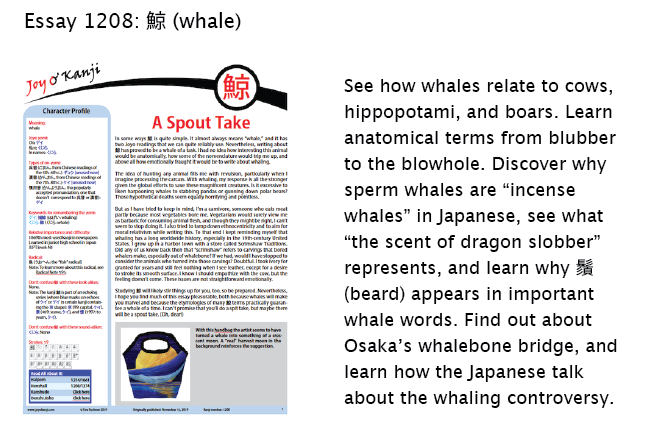
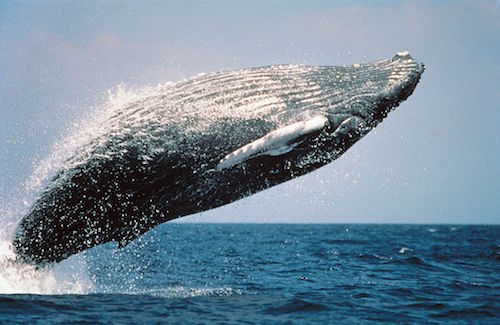
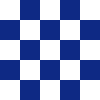
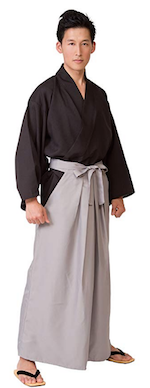
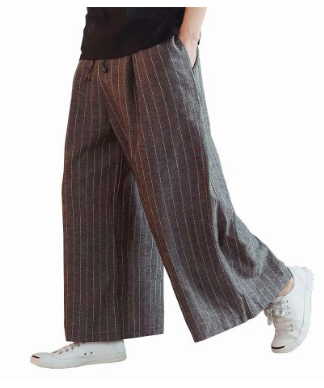

Comments